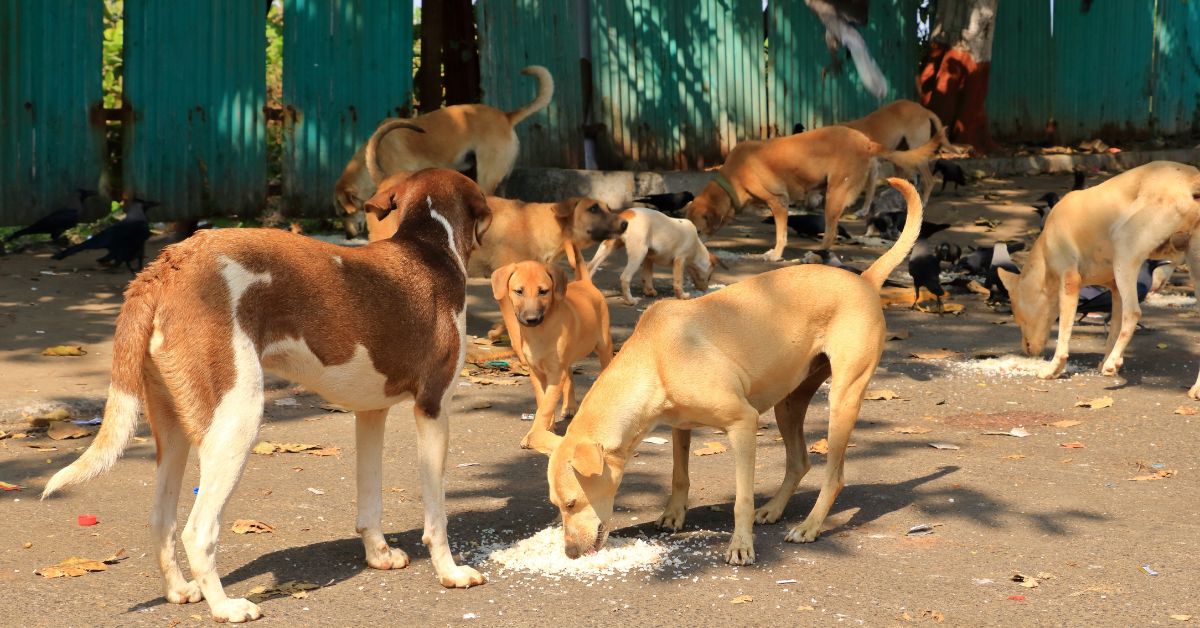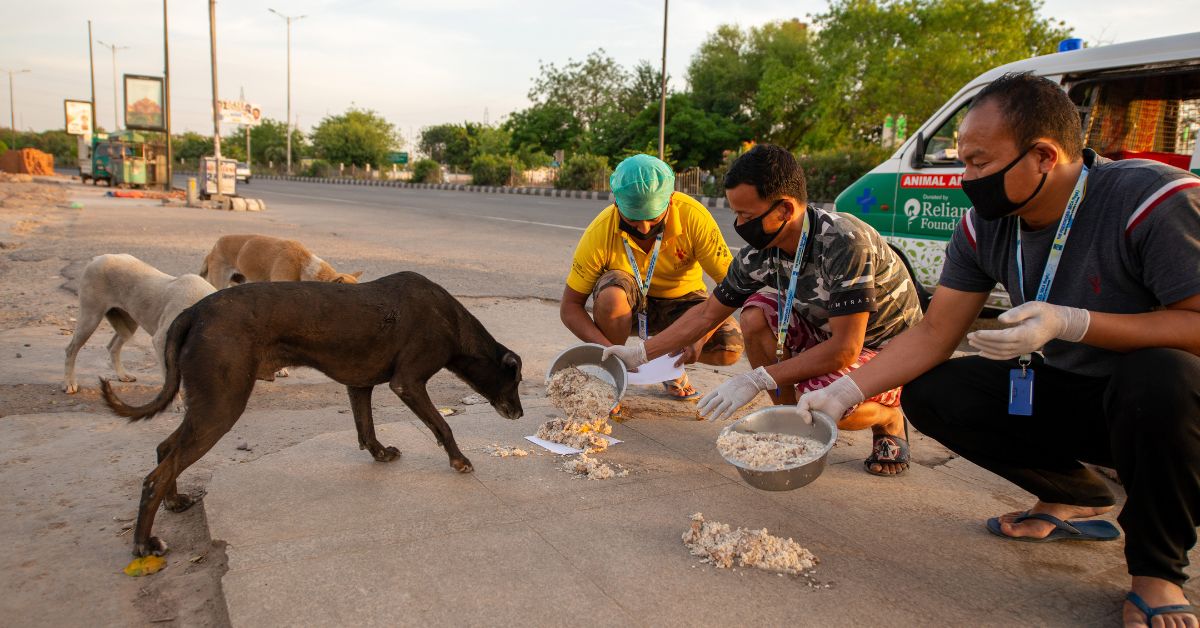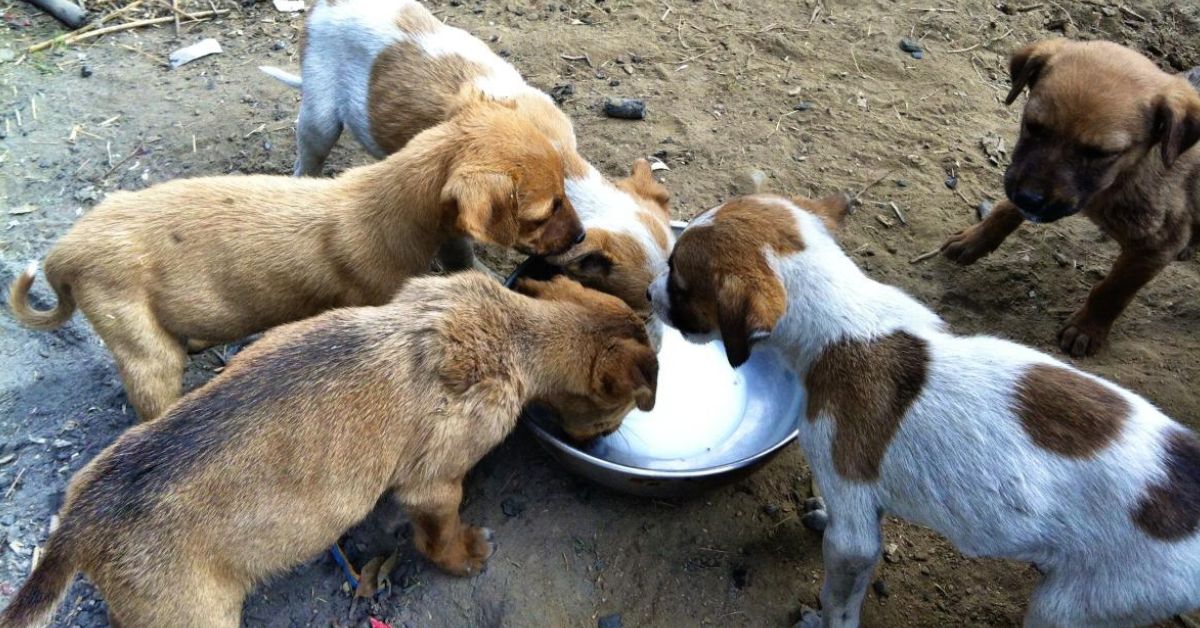How School Leftovers Have Become Lifelines for Hungry Stray Dogs In West Bengal
Every school lunch leaves behind something; a few spoonfuls of rice, a bit of sabzi, maybe a half-eaten roti. In most places, this extra food is discarded, forgotten. But in West Bengal, it may soon become something far more meaningful: a daily act of compassion.
Under a new initiative proposed by the state government, leftovers from the midday meal scheme may soon find their way to the stray dogs waiting quietly outside school gates. It’s not just about feeding hungry animals, it’s about teaching children something vital: that kindness isn’t limited to the classroom.
What is the initiative?
The West Bengal government has announced an advisory under the Paschim Banga Samagra Shiksha Mission (PBSSM) encouraging all government-run and aided schools to feed leftover midday meal food to stray dogs outside school premises.
When and how often?
The feeding is proposed to happen once every afternoon, after students have finished eating.
Who will feed the dogs?
Members of self-help groups (SHGs) already working under the midday meal scheme — especially those in the Swayambhar program — are likely to handle the feeding, ideally under teacher supervision.
Health and safety measures
Schools are encouraged to coordinate with the District Animal Resource Development Department to ensure that the strays are vaccinated and sterilised, making the practice safe for both children and animals.
Why was this proposed?
The advisory came in response to a request from animal rights advocate and former Union minister Maneka Gandhi, who asked for proactive steps to improve human-animal relationships near schools.
 It’s not just about feeding hungry animals, it’s about teaching children something vital. Picture: Shutterstock
It’s not just about feeding hungry animals, it’s about teaching children something vital. Picture: Shutterstock
From caution to coexistence:
Earlier this year, schools had been advised to take preventive steps to reduce the chance of stray dog attacks, including not provoking strays and being extra cautious during the breeding season.
This new advisory builds on that, shifting from fear-based avoidance to compassionate awareness.
Instead of viewing stray animals as problems to be pushed away, the initiative treats them as living beings deserving care — a fundamental mindset change that could impact generations.
- But what about the challenges?
While the spirit of the initiative is being applauded, schools have raised some key concerns:
- Where will the food come from?
It’s unclear whether the food for dogs will be separate or from leftover portions meant for children. A senior PBSSM official has said this is still under discussion and will be clarified soon.
- Who will supervise the feeding?
Teachers are already balancing multiple responsibilities. Some fear that supervising feeding may add to their already heavy workloads unless extra support is provided.
 Schools are encouraged to coordinate with the District Animal Resource Development Department to ensure that the strays are fed. Picture source: Shutterstock
Schools are encouraged to coordinate with the District Animal Resource Development Department to ensure that the strays are fed. Picture source: Shutterstock
Why it matters
Even with the hurdles, the initiative opens the door to something deeply valuable: a generation raised with empathy for all living beings. Here’s what it could do:
- Normalize coexistence with animals:
Feeding stray animals regularly helps students understand that animals are not to be feared or harmed, but respected and cared for — especially when they are hungry or injured.
- Plant seeds of empathy early:
When children see adults treating strays with kindness, they are more likely to adopt that behaviour themselves. Over time, this can shape a more compassionate and responsible citizenry.
- Build emotional intelligence:
Feeding and caring for animals teaches children about vulnerability, responsibility, and non-verbal communication — lessons that go far beyond textbooks.
- Encourage wider environmental values:
Children who care for dogs may also begin caring about birds, trees, water, and eventually, the planet. Kindness, after all, has ripple effects.
 When children see adults treating strays with kindness, they are more likely to adopt that behaviour themselves. Picture source: Deccan Herald
When children see adults treating strays with kindness, they are more likely to adopt that behaviour themselves. Picture source: Deccan Herald
What it could mean for human-animal relationships
This isn’t just about dogs — it’s about creating a society where humans and animals can share space peacefully.
- Fewer conflicts, more compassion:
Regular feeding and sterilisation of strays helps reduce aggressive behaviour and unwanted litters, making neighbourhoods safer for both people and animals.
- Shifting public attitude:
When compassion is woven into everyday routines like school lunches, it begins to reshape how communities view stray animals — from nuisance to neighbour.
Children who learn to care for animals early are more likely to stand up against cruelty later — whether it’s toward animals, other children, or the environment.
A hopeful step forward
The plan is still new. Details are being worked out. Implementation may take time. But its potential is powerful.
Imagine a school where children not only learn arithmetic and grammar, but also how to extend a hand to the voiceless. Where a leftover chapati doesn’t go to waste, but to a waiting tail-wagger who’s learned that humans can be kind.
Edited by Saumya Singh
News